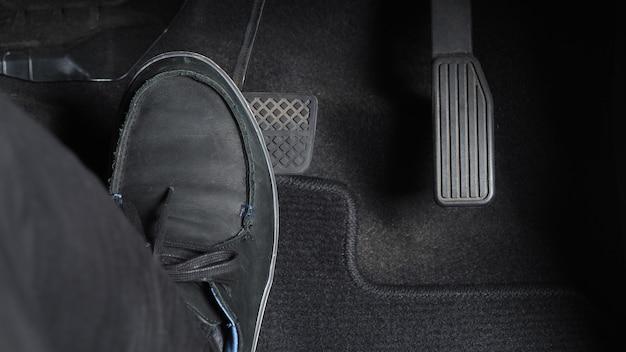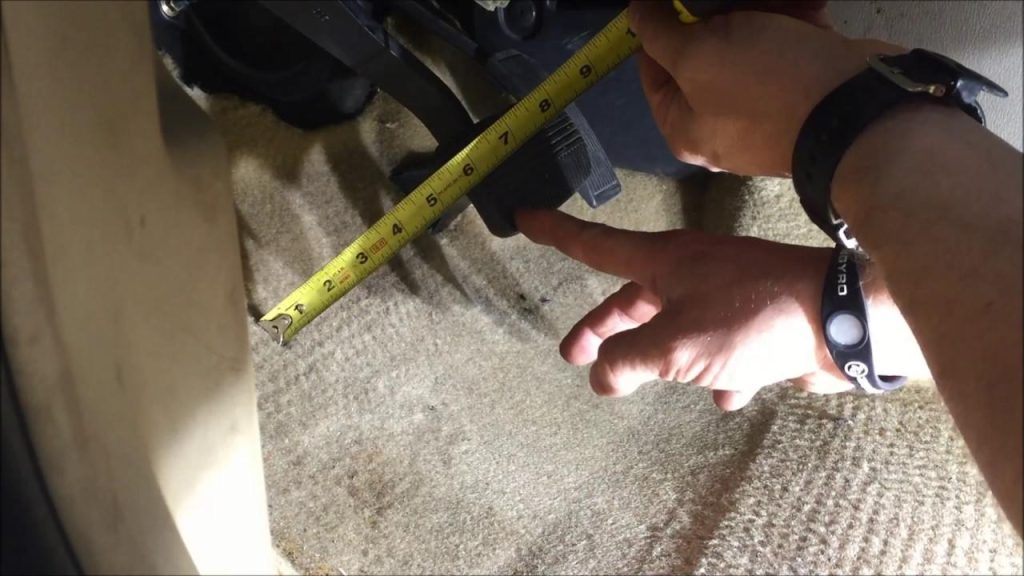Drive with Ease: A Guide to Adjusting Your Gas Pedal Height for a Smoother Ride
Having the right gas pedal height is crucial for a comfortable and safe driving experience. Many drivers overlook the importance of this aspect of their vehicle’s setup, but it can greatly impact their overall comfort and control while driving. A gas pedal that is too high or too low can lead to discomfort, fatigue, and even difficulty reaching the pedal, which can be dangerous on the road. In this article, we will explore the significance of proper gas pedal height and provide a step-by-step guide on how to adjust it to suit your needs.
Understanding Your Vehicle’s Gas Pedal Mechanism
The gas pedal, also known as the accelerator pedal, is a crucial component of your vehicle’s control system. It is responsible for controlling the speed of the vehicle by regulating the amount of fuel that enters the engine. When you press down on the gas pedal, it opens a valve that allows more fuel to flow into the engine, increasing its speed. Releasing the pedal reduces the fuel flow and slows down the vehicle.
The gas pedal is typically connected to a throttle cable or an electronic sensor that relays your input to the engine. In modern vehicles, electronic throttle control systems have become more common, where sensors detect the position of the gas pedal and send signals to the engine control unit (ECU) to adjust fuel flow accordingly. Understanding how the gas pedal works and its role in controlling your vehicle’s speed is essential when it comes to adjusting its height for optimal comfort and control.
Signs You Need to Adjust Your Gas Pedal Height
There are several signs that indicate you may need to adjust your gas pedal height. One common symptom is discomfort while driving. If your gas pedal is too high or too low, it can cause strain on your leg muscles and lead to discomfort or even pain during long drives. Additionally, if you find yourself constantly readjusting your seating position to reach the gas pedal comfortably, it may be a sign that the height needs to be adjusted.
Fatigue is another common sign that your gas pedal height may need adjustment. When your gas pedal is not at the right height, it can cause your leg muscles to work harder than necessary, leading to fatigue and decreased concentration while driving. This can be dangerous, as it impairs your ability to react quickly in case of an emergency.
Difficulty reaching the gas pedal is a clear indication that the height needs adjustment. If you find yourself stretching or straining to reach the pedal, it can affect your control of the vehicle and increase the risk of accidents. It’s important to address these signs promptly and adjust your gas pedal height to ensure a comfortable and safe driving experience.
How to Determine the Right Height for Your Gas Pedal

Determining the right height for your gas pedal is essential for optimal comfort and control while driving. The ideal height will vary depending on your body type and driving position. Here are some tips on how to measure the ideal gas pedal height:
- Sit in your normal driving position: Adjust your seat and steering wheel to your preferred position before measuring the gas pedal height. This will ensure that you are in a comfortable and natural driving position.
- Measure the distance from your heel to the floor: With your foot flat on the floor, measure the distance from your heel to the floor. This will give you an idea of how high or low the gas pedal should be for you.
- Consider ankle flexion: Take into account how much ankle flexion you have when pressing down on the gas pedal. Some people have more flexibility in their ankles than others, so it’s important to find a height that allows for comfortable ankle movement.
- Test different heights: Once you have an idea of the ideal height based on your measurements, test different positions by adjusting the gas pedal height accordingly. Sit in your driving position and see how it feels when you press down on the pedal. Make adjustments until you find the height that feels most comfortable and natural for you.
Adjusting Your Gas Pedal Height: Step-by-Step Guide
Adjusting your gas pedal height is a relatively simple process that can be done at home with the right tools. Here is a step-by-step guide on how to adjust your gas pedal height:
- Gather the necessary tools: You will need a wrench or socket set to loosen and tighten the bolts that hold the gas pedal in place. Make sure you have the correct size tool for your vehicle.
- Locate the gas pedal assembly: The gas pedal assembly is typically located under the dashboard on the driver’s side of the vehicle. It may be covered by a plastic panel that needs to be removed to access the assembly.
- Loosen the bolts: Use your wrench or socket set to loosen the bolts that hold the gas pedal assembly in place. Be careful not to remove them completely, as you will need them to secure the assembly at the desired height.
- Adjust the height: Once the bolts are loosened, you can adjust the height of the gas pedal by moving it up or down. Take into account your measurements and test different positions until you find the height that feels most comfortable for you.
- Secure the gas pedal assembly: Once you have adjusted the height, tighten the bolts to secure the gas pedal assembly in place. Make sure they are tightened securely to prevent any movement while driving.
- Test the new height: Sit in your driving position and test the new gas pedal height by pressing down on it with your foot. Ensure that it feels comfortable and natural, and make any additional adjustments if necessary.
Common Mistakes to Avoid When Adjusting Your Gas Pedal Height
When adjusting your gas pedal height, it’s important to avoid common mistakes that can lead to discomfort or even damage to your vehicle. Here are some common errors to avoid:
- Over-tightening the bolts: While it’s important to secure the gas pedal assembly tightly, over-tightening the bolts can lead to damage or breakage. Use the appropriate amount of force when tightening the bolts to ensure a secure fit without causing any damage.
- Not testing the new height: After making adjustments, it’s crucial to test the new gas pedal height in your driving position. Failing to do so may result in an uncomfortable or unsafe driving experience. Take the time to sit in your driving position and ensure that the height feels comfortable and natural before finalizing the adjustment.
- Ignoring professional help: If you are unsure about adjusting your gas pedal height or if you encounter any difficulties during the process, it’s best to seek professional help. A qualified mechanic or technician can assist you in adjusting the gas pedal height correctly and ensure that it is done safely.
Tips for Maintaining Your Gas Pedal Height
Once you have adjusted your gas pedal height, it’s important to maintain it properly to prevent misalignment and ensure optimal comfort and control while driving. Here are some tips for maintaining your gas pedal height:
- Regularly check for any signs of misalignment: Keep an eye out for any signs that indicate your gas pedal may be misaligned, such as discomfort, fatigue, or difficulty reaching the pedal. If you notice any of these symptoms, it may be a sign that your gas pedal height needs adjustment.
- Inspect the bolts regularly: Periodically check the bolts that hold the gas pedal assembly in place to ensure they are tightened securely. Loose bolts can lead to movement or misalignment of the gas pedal, which can affect your control of the vehicle.
- Clean and lubricate the gas pedal mechanism: Over time, dust and debris can accumulate in the gas pedal mechanism, causing it to become stiff or sticky. Regularly clean and lubricate the mechanism to ensure smooth operation and prevent any issues with the gas pedal height.
- Seek professional help if needed: If you encounter any difficulties or are unsure about maintaining your gas pedal height, it’s best to seek professional help. A qualified mechanic or technician can inspect and adjust the gas pedal height if necessary, ensuring that it is done correctly and safely.
Benefits of a Properly Adjusted Gas Pedal Height

Having the right gas pedal height offers several benefits that can greatly enhance your driving experience. Here are some advantages of a properly adjusted gas pedal height:
- Improved comfort: A properly adjusted gas pedal height ensures that your leg muscles are not strained or fatigued while driving. This leads to increased comfort, especially during long drives, and reduces the risk of discomfort or pain.
- Reduced fatigue: When your gas pedal is at the right height, your leg muscles work more efficiently, reducing fatigue and allowing you to maintain focus and concentration while driving. This is particularly important for long journeys or when driving in heavy traffic.
- Better control of the vehicle: A properly adjusted gas pedal height allows for better control of the vehicle, as it ensures that your foot can easily reach and press down on the pedal without straining or stretching. This improves your ability to accelerate and decelerate smoothly, enhancing overall control and safety on the road.
- Enhanced driving experience: By adjusting your gas pedal height to suit your needs, you can enjoy a smoother and more comfortable driving experience overall. This can make driving more enjoyable and reduce stress or discomfort associated with long periods behind the wheel.
Frequently Asked Questions About Gas Pedal Adjustment
The frequency of adjusting your gas pedal height will depend on your personal comfort and any changes in your driving position. If you experience discomfort, fatigue, or difficulty reaching the pedal, it may be a sign that the height needs adjustment. It’s best to address these signs promptly and adjust the gas pedal height as needed.
Adjusting your gas pedal height can be done safely at home with the right tools and knowledge. However, if you are unsure or encounter any difficulties during the process, it’s best to seek professional help. A qualified mechanic or technician can assist you in adjusting the gas pedal height correctly and ensure that it is done safely.
Gas pedal adjustment methods may vary depending on the make and model of your vehicle. It’s important to consult your vehicle’s owner’s manual for specific instructions on how to adjust the gas pedal height in your particular vehicle. If you are unsure or encounter any difficulties, it’s best to seek professional help.
Conclusion: Enjoying a Smoother and More Comfortable Driving Experience
In conclusion, having the right gas pedal height is crucial for a comfortable and safe driving experience. By understanding how the gas pedal works and its role in controlling your vehicle’s speed, you can determine the ideal height for your needs. Adjusting your gas pedal height can be done at home with the right tools and knowledge, but it’s important to avoid common mistakes and seek professional help if needed.
Maintaining your gas pedal height is essential to prevent misalignment and ensure optimal comfort and control while driving. Regularly checking for signs of misalignment, inspecting the bolts, and cleaning and lubricating the gas pedal mechanism can help keep it in good condition. The benefits of a properly adjusted gas pedal height include improved comfort, reduced fatigue, better control of the vehicle, and an enhanced overall driving experience.
By adjusting your gas pedal height to suit your needs, you can enjoy a smoother and more comfortable driving experience. Take the time to measure and adjust the height correctly, and don’t hesitate to seek professional help if needed. With the right gas pedal height, you can drive with confidence and enjoy every journey.
